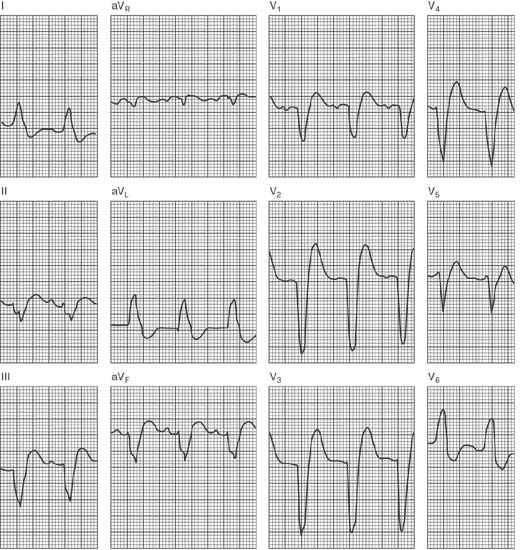Most Missed Question in Internal Medicine This Week
He has no other medical problems and is otherwise healthy. He does not smoke, he exercises regularly, and his laboratory values show normal liver and kidney functions. His screening glycated hemoglobin level is 5.2 g/dL.
Which of the following classes of antihypertensive medications would be an appropriate first-line antihypertensive medication for this patient?
Answers:
- Current national guidelines have conflicting recommendations about starting with a thiazide diuretic alone versus a 2-drug combination.
- Thiazide diuretic and ACE inhibitor
- Thiazide diuretic and calcium channel blocker
- Thiazide diuretic and beta-blocker
There were a lot of hypertension related misses in the IM arena this week, ranging from pregnancy to appropriate guidelines to follow. This is one of the guideline problems. The older JNC guidelines recommend starting with one first line agent. The 2017 ACC/AHA guidelines split hypertension into ‘stage 1’ and ‘stage 2’, and recommends starting two first-line agents (thiazide, ACE-I/ARB, or CCB). This conflict (at least at the textbook level) is “start one and then add” versus “go ahead and start two if BP is that high”. 🙂
In real life, with low cardiac risk, you’ve got strong recommendations for lifestyle changes, sometimes alongside drug therapy, and then a 3 to 6 month evaluation. Thiazide diuretics are common first drug therapy (e.g. chlorthalidone 12.5 mg–25 mg daily). If that doesn’t work, or the patient is still eating Cheeto’s, calcium channel blocker or ACE-inhibitor/ARB.
There are low-dose single pill combinations, but usually used after determining tolerance. And there are loads of individualization depending on comorbidities, side effects, and borderline renal function, which is why the question stem specifies race.
Complicated, but clue in on the “no other medical problems” part of the stem when you see a question like this.
Why This Question Is Often Missed
- Guideline Nuance: Learners recall that thiazide diuretics are first-line but are unsure when to use monotherapy versus combination therapy, since different guidelines (JNC 8 vs. 2017 ACC/AHA) offer slightly different thresholds.
- Combination Temptation: The presence of multiple appealing “two-drug” regimens (diuretic+ACE-I, diuretic+CCB, diuretic+β-blocker) distracts from recognizing that this patient, with isolated stage 1 hypertension (150/90 mm Hg), may start with monotherapy.
What the Distractors Indicate
| Option | What It Tests / Implies | Why It’s Wrong Here |
|---|---|---|
| Thiazide + ACE inhibitor | Understanding of complementary RAAS inhibition | Overly aggressive for stage 1 HTN; guidelines support single-drug initiation in uncomplicated patients. |
| Thiazide + Calcium channel blocker | Knowledge of synergistic afterload reduction | Unnecessary dual therapy when BP is only moderately elevated; combination reserved for stage 2 or high risk. |
| Thiazide + β-blocker | Recognition of rate control benefits | β-blockers are not first-line for uncomplicated HTN without compelling cardiac indication; over-treatment. |
High-Yield Pearl
In patients with uncomplicated stage 1 hypertension, start with a thiazide diuretic—combination therapy is reserved for higher stages or specific comorbidities.
Core Learning Objectives
- Recognize first-line antihypertensive drug classes for uncomplicated essential hypertension per contemporary guidelines.
- Understand when to escalate from monotherapy to initial combination therapy based on blood pressure stage.
The “Test Trick” at Play
The exam presents three plausible two-drug regimens to lure examinees into overthinking “what else could I add,” when the key is to note that this patient has only stage 1 hypertension without comorbidities. The trap is conflating “more agents = better control” with guideline-driven thresholds for combination initiation.
Additional Practice Questions and Remediation
Question 1
A 62-year-old Black woman with no comorbidities has an average office BP of 152/92 mm Hg on repeat visits. Which initial therapy is best?
A. Thiazide diuretic
B. ACE inhibitor + calcium channel blocker
C. β-blocker monotherapy
D. Loop diuretic
Answer and Remediation
- If you chose A: Correct response! In uncomplicated stage 1 HTN, thiazides are first-line.
- If you chose B, C, or D:
- B: Review: Dual therapy is indicated for stage 2 HTN (≥160/100 mm Hg) or high-risk; not stage 1.
- C: Review: β-blockers aren’t first-line absent specific cardiac indications.
- D: Review: Loop diuretics are reserved for volume overload states, not uncomplicated HTN.
Question 2
A 48-year-old man with CKD stage 3 and BP 148/88 mm Hg is started on therapy. Which is optimal?
A. ACE inhibitor monotherapy
B. Thiazide monotherapy
C. β-blocker + thiazide
D. Calcium channel blocker monotherapy
Answer and Remediation
- If you chose A: Correct response! In CKD with albuminuria, ACE inhibitors are preferred first-line.
- If you chose B, C, or D:
- B: Review: Thiazides lose efficacy in eGFR <30 mL/min; plus ACE-I preferred for renal protection.
- C: Review: Combination not needed at this BP level; plus thiazide less effective in CKD.
- D: Review: CCBs are acceptable but ACE-I offers renal benefit here.
Question 3
A 70-year-old man with BP 165/95 mm Hg and no comorbidities requires initial treatment. Best choice?
A. ACE inhibitor monotherapy
B. Thiazide diuretic + calcium channel blocker
C. β-blocker monotherapy
D. Loop diuretic + ACE inhibitor
Answer and Remediation
- If you chose B: Correct response! Stage 2 HTN (≥160/100 mm Hg) warrants initial dual therapy per ACC/AHA 2017.
- If you chose A, C, or D:
- A: Review: Monotherapy inadequate for stage 2 HTN.
- C: Review: β-blockers not first-line; plus monotherapy insufficient.
- D: Review: Loop diuretics not indicated without volume overload; combination too complex initially.
Question 4
A 54-year-old Asian woman with isolated systolic HTN of 158/82 mm Hg and no other issues. First-line?
A. Thiazide monotherapy
B. Calcium channel blocker monotherapy
C. ACE inhibitor + thiazide
D. β-blocker + CCB
Answer and Remediation
- If you chose B: Correct response! In older patients with isolated systolic HTN, CCBs are particularly effective.
- If you chose A, C, or D:
- A: Review: Thiazides work but CCBs may better address arterial stiffness in isolated systolic HTN.
- C: Review: Stage 2 systolic alone might warrant combo, but monotherapy often sufficient first.
- D: Review: Unnecessary dual therapy without evidence of heart rate issues or severe HTN.
Question 5
A 45-year-old non-Black man with BP 142/86 mm Hg and a history of gout. Which is best initial therapy?
A. Thiazide diuretic
B. ACE inhibitor monotherapy
C. β-blocker monotherapy
D. Loop diuretic
Answer and Remediation
-
- If you chose B: Correct response! ACE inhibitors avoid hyperuricemia exacerbation.
- If you chose A, C, or D:
- A: Review: Thiazides can worsen gout via urate retention.
- C: Review: β-blockers are not preferred first-line absent other indications.
- D: Review: Loop diuretics similarly risk hyperuricemia and aren’t first-line in uncomplicated HTN.
Mini Case Discussion Prompt
Compare the pros and cons of initiating combination therapy versus monotherapy in a patient with stage 2 hypertension but borderline renal function (eGFR 45 mL/min)—how do comorbidities sway your choice of agents and thresholds?
This question appears in Med-Challenger Internal Medicine Review with CME
Try for free and save. Ace your exams and meet your CME/MOC requirements for just $35 a month!
No matter your program, no matter the size, Med-Challenger for Groups and Institutions can better prepare your program or group, fulfill industry requirements, and increase test scores.







